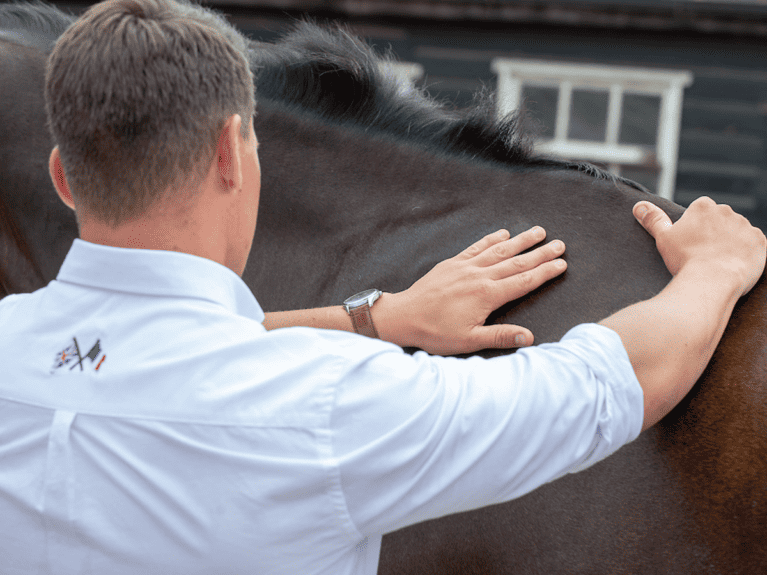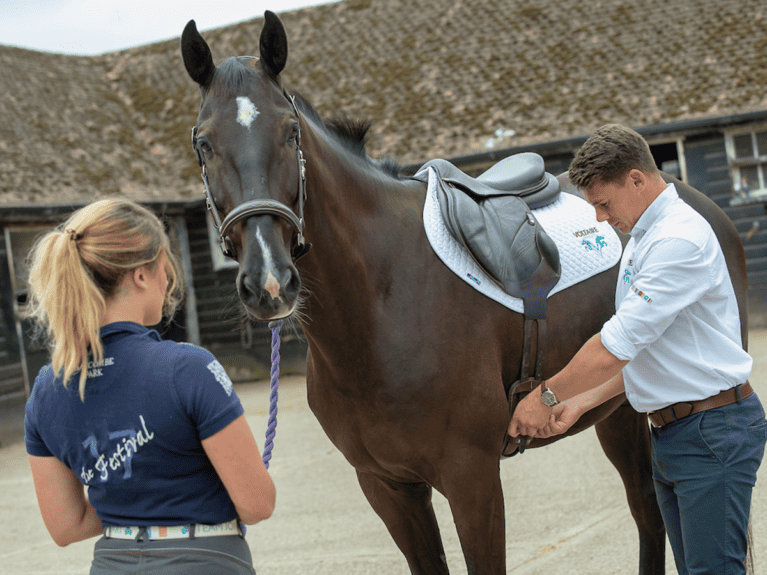You can’t take him to the garage, but your horse still needs regular checks to keep him ticking over. We demystify a year in horsey maintenance

We’re prompted to service and MOT our cars every year, but unfortunately our horses don’t come with an odometer or check engine light – it’s something we have to figure out for ourselves. Plus, equine care isn’t a one-stop shop to be addressed in just a single yearly visit. Ensuring your horse’s body, tack and kit are in tip-top condition is an essential and ongoing part of his care, and key to keeping him safe from illness, injury and discomfort.
Sticking to a horse care timetable helps you track trends and changes in his physicality and wellbeing throughout the year. This helps you learn to anticipate and manage them, for example with alterations to his diet, tack or daily routine. So, how many different checks does a full equine MOT consist of, and how regularly do you need to undertake them? Well, buckle up and have your calendar at the ready, because we’re about to take you through a year of horsey pit-stops which are sure to keep him in the best nick.

Have your saddle checked
Regular visits from a qualified saddler are an essential part of good horse care. Your horse can change shape dramatically throughout the year due to his…
- workload and weight When in peak fitness, your horse will have a different shape from when he first emerges from his winter holiday
- age If your horse is younger, his physique will undergo multiple changes as he matures and gains strength through his work
- breed or type Cobs and native types, for example, are prone to carrying more weight on their shoulders
Because of all these factors, the saddle that fits your horse like a glove at the start of the year might not sit as well come summer. It’s for this reason that you should call out a qualified saddler to check the fit of your saddle at least every six months.
Keep an eye out for any signs your saddle may be causing him discomfort. Rubs or bent hairs on his back, or anxiety or grumpiness when tacking up, might indicate something’s not right. If you spot any of these signs, notify your saddler, even if it’s not time for a check-up.
Did you know?
As well as having the fit of your saddle checked, there are also qualified bridle-fitting and bit specialists who will come out to assess your horse and fit his headwear.
Check your horse’s weight
Regularly checking your horse’s weight, either with a weightape or on a weighbridge, will keep you firmly in the know about any risks to his overall wellbeing, as being over- or underweight can compromise his health. It’ll also help to accurately inform your feeding choices in terms of calorie requirement and dosage for things such as supplements and wormers.
Another useful technique is body condition scoring, which will give you an insight into his fat coverage. It focuses on key areas where fat can build up, such as the crest and rump, and culminates in a score from 1–9 or 0–5, depending on which system you use. Aim to weigh and condition score once a month – record your findings, because, over time, they should reveal annual trends that will assist you in anticipating and mitigating changes.
Top tip
Just like yours, your horse’s weight fluctuates throughout the day, so try to record his weight at the same time of day each month.
Keep on top of vaccinations
Every horse should be vaccinated against tetanus and equine influenza (flu), even if he never leaves his paddock.
To inoculate against…
- flu, your horse will require an initial course of three injections over the course of 10 months, followed by an annual booster
- tetanus, he’ll need two injections four to six weeks apart, followed by a booster 12 months later and a regular jab every two years
Your horse’s boosters can easily be addressed in one annual visit from your vet
Did you know?
You can ride your horses after a vaccination, but keep it light – most manufacturers advise not to exercise to the point of sweating in the first 24 hours
Consider regular physio sessions
Regular physiotherapy sessions will help your horse feel and perform better by identifying and treating any areas of muscle tightness and weakness. Following a physiotherapist’s assessment, these shortcomings can be addressed with direct treatment from them and through prescribed stretches for you to carry out with him. These measures can help protect your horse from developing injuries and enhance his suppleness.
Physiotherapy can only be carried out with a vet’s permission, so your physio will contact your vet prior to their visit obtain approval and any relevant history. You should also be prepared to brief the physio about any previous illness or injury and let them know about his current workload and your aims.
A physio session every six months minimum will help ensure your horse can perform at his best. Your vet and physio will advise if extra visits are needed.
Top tip
Ensure you’re prepared with everything you need ready for a smooth physiotherapy session. You’ll need a headcollar, leadrope and your saddle for a routine check-up, but may require a lunge line, the rest of your tack, your hat and a free arena for a ridden assessment, and treats to practise stretches with.
Carefully inspect your tack
Taking note of your tack’s state of repair doesn’t just benefit your horse – it also helps keep you safe. No one wants a stirrup leather to snap mid-canter, or to have a cheekpiece give out over a jump, and giving your tack a thorough checkover every other month will mitigate the risk.
Take a careful look at the leatherwork and make sure there aren’t any signs of tearing or fraying, particularly around eyelets on girth straps and stirrup leathers. Your bridle’s fittings, such as its billets, may become loose or rusty over time, and keep an eye open for frayed stitching. Have a good feel of your bit to check for rough patches, too, as well as for splits and textured edges to your girth, particularly if it’s synthetic. It’s also important to feel the panels of your saddle for any unevenness in the flocking and if you detect any lumps, call your saddler out to address them.
Have your horse’s teeth checked
The anatomy of your horse’s jaw and the fact that he chews in a sideways, circular motion can lead to rough edges on the outside of his upper cheek teeth and the inside edges of his lower cheek teeth. For this reason, his teeth need to be rasped, or floated, to smooth them off, generally once a year unless your dentist identifies any other issues that need more regular examination.
Signs that your horse may be in need of an extra visit from the dentist include…
- being off his food or weight loss
- taking longer to eat or dropping food
- discomfort while being ridden
- quidding, a process by which your horse packs balls of forage in his cheeks to guard against sharp teeth. You might find evidence of these on his stable floor.
Did you know?
Horses under five and over 20 should have their teeth checked every six months, rather than annually.
Round-the-clock care
A year in the life of a dedicated horse owner is always a busy one, but sticking to a regular and comprehensive regime of assessment by yourself and industry professionals will set your horse up for a long and happy career – whatever his level or workload.
However, because you spend a huge chunk of your time running around after your 500kg dependant, it’s important to assess how you’re doing, too. Perhaps next time you book a physiotherapy session for your horse, a sports massage for you might also be the order of the day.
Top tip
If you regularly transport your tack in your car, invest in a block or stand to rest your saddle on to help ensure it’s properly supported and doesn’t get damaged in transit.















